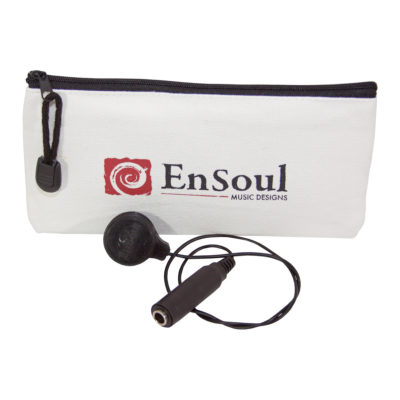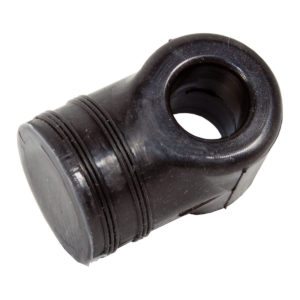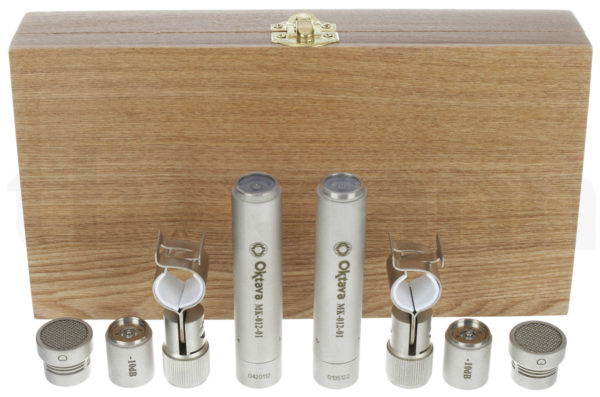What is the best way to amplify, mic, and record a Hang, Hand Pan and Pantam?
This is a very common question that we are asked. The difficulty with recording these instruments is that the sound waves do not come off of the instrument from a single source and in a single direction. The waves come off of the instrument in many directions from each of the tone fields. Each tone field sends sound waves directly perpendicular to the flat membrane as well as linearly from each of the long and short axes. Sound waves also travel into the resonating chamber of the instrument, which might interact with the helmholtz. Finally different notes may interact with each other through coupling. As many studio engineers and stage hands have painstakingly discovered, this all proves to be a complex sonic beast to record and amplify.
When trying to capture the sound of the handpan, the first thing to ask is what do you want to do with your sound? Is it for live performance and busking or is it for a recording project in the studio or for a video? Each setting is very different and requires different tools. There are many opinions and methods. The following is what we currently prefer.
Amplifying Handpans in Live Performance and Busking
The problem that usually arises on stage comes with using microphones to amplify a Handpan, Hang or Pantam. Microphones will feed back and pick up other instruments if turned up too loud or they will be too quiet and the instruments will be drowned out by other musicians on stage. Unless you are playing in a very quiet setting or with a relatively quiet or volume sensitive ensemble, microphones simply don’t work very well without significant hassle (especially in a loud band or performance of any sort). For this reason, stage performance and busking basically requires using pickups of some sort in our humble opinion.
There have been some options on the market for years. One of the earliest options was a handpan pick up system developed by Baur and Brown. In2013, our friend Jeremy Arndt spent some time dialing in a system with K&K Sound using a Twin Spot and Dual Channel Preamp
The most recent pick up product we have seen was developed by Ensoul.
Mark spent months testing and giving feedback on a number of prototypes with the company before they officially opened the doors on their handpan pick up.
 They offer 3 types:
They offer 3 types:
- No filter
- 150 Hz high pass filter
- 250 hz high pass filter
“High pass filter” means that it mutes lower frequencies under this threshold and only allows higher frequencies to pass. For perspective, a D3, which is a very popular center note, is 146 hz and C4 is 256 hz. In our humble opinion, go for the “No Filter” option and use an EQ to dial in the frequencies details.
There are a few things about the Ensoul pan pickup that make it really appealing.
First, they are quite affordable for what they do at roughly $100 USD!!
Next, it is quite impressive how well they pick up a fairly balanced sound across the instrument including subtleties like shoulder tones. Equally impressive is that the pickup achieves this balance without the annoyingly loud “attack” of the finger’s impact on the steel (which characterizes most other pickups we have explored).
Depending on what kind of set up you have and what equipment you are plugging the pickup into, there is no need for a preamp (although it can definitely help with certain equipment).
We have tested the Ensoul Pickup on nitrided and stainless steel, with high notes, low notes, and bottom notes. The following are a few points to consider when balancing the sound:

- We tend to place the magnetic pickup on the outside bottom shell of a handpan between the port and lowest notes.
- While the pick up magnetically attaches to the steel, a bit of further security with painter’s tape can help make sure it doesn’t fall off. Painter’s tape is especially good for not leaving behind as much sticky residue when taken off.
- We also tend to use the pickups with stands so the cable jack magnet (see photo) is best placed on the stand . If this is not an option, then make sure to tape it and the cable down well on to the instrument to avoid the cable moving around and creating static noise or pulling the pick up off of the handpan.
- There seem to be a few small frequency ranges that come in a little louder than the rest. This is something that a decent EQ board can balance however.
- We have tested putting the pick up between the port and the high notes or between the port and the low notes. The result is very close and equally dependent on the specific balance of the instrument and EQ than the pick up it seems. We found that bottom notes very near the pickup might be a bit louder so it can valuable to distance the pickup away from them.
- The pickups come with felt doughnut shaped mufflers. It is worth exploring all of the sizes with your system and listening to what you like best. The thinner doughnuts tend to allow more sound but also might create some distortion if too loud. The solid pad will produce the cleanest sound but at the expense of volume, especially without the right PA or amplifier.
- Depending on how the port is tuned, it might be worth using a sheet magnet to muffle it. If the port interacts with notes on the instrument and distorts them even subtly, it can be amplified by the pickup.
- The pickup opens the world of digital effects! Don’t forget to eat at least once per day and try to get a good night’s sleep at least once per month whether you need it or not while you explore the endless rabbit hole of effects on handpan 😉
Ensoul Pan Pickup Limitations:
- The first limitation is that it will not pick up the helmholtz, which was fine for us. The helmholtz tends to be more subtle anyways compared to the rest of the instrument while also easily picked up with a bass mic placed under the instrument near the port.
- It is important to realize that while this is undoubtedly the best pick up for live performance and busking that we have explored (especially at the price), it is best only for these uses. This is not going to replace a $4000 microphone in the studio (or even a $250 microphone). The strength of the Ensoul pickup is that is does a very nice job of picking up the Handpan in a loud environment such as on stage with other musicians or outdoors when busking near traffic or the noises of a city. If you want the nuances and precision of the sound or are trying to capture as closely as possible the natural sound of the instrument, the pickup will fall short.
Overall, the Ensoul Pickup is a great product for performance and busking!
We recommend at least one pick up for each handpan being played. Two pickups per instrument will give you a bit more volume if needed however it is an unnecessary investment in our humble opinion. If you want to really take it to the next level, also use a bass mic to pick up the boom of the helmholtz.
Studio recording for audio and video
A studio is a very different setting than a stage or outdoors so it is not surprising it requires different tools.
We are often asked how we record the Saraz in our videos.
 We use a matched pair of Oktava MK-012 pencil microphones at 90 degrees of each other pointing toward the center of the instrument. We record with a Zoom H6 using phantom power and then match the files with the video in post production. For a little while, we also explored adding an Audix D6 bass mic to pick up the helmholtz after it was recommended by our friend, Peter Levitov. The Audix proved to be a bit touchy specifically for capturing the true sound of our instruments in our humble opinion. It either produced too much bass or not enough at the expense of more static. It is worth mentioning however that this is very specifically because we are trying to capture the truest sound possible of the instrument for our customers. For a recording project where one might want more bass in the sound, the Audix is great! In a recording project, we definitely prefer the bass further amplified by the Audix!
We use a matched pair of Oktava MK-012 pencil microphones at 90 degrees of each other pointing toward the center of the instrument. We record with a Zoom H6 using phantom power and then match the files with the video in post production. For a little while, we also explored adding an Audix D6 bass mic to pick up the helmholtz after it was recommended by our friend, Peter Levitov. The Audix proved to be a bit touchy specifically for capturing the true sound of our instruments in our humble opinion. It either produced too much bass or not enough at the expense of more static. It is worth mentioning however that this is very specifically because we are trying to capture the truest sound possible of the instrument for our customers. For a recording project where one might want more bass in the sound, the Audix is great! In a recording project, we definitely prefer the bass further amplified by the Audix!
A different Approach

When recording the 2015 Reentry Album with E.W. Harris, we took a very different approach to capturing a chromatic set of instruments. For a more gestalt approach, E.W. set up a
- Studio Projects CS-5 in a figure of 8 pattern at the cone apex above the center note
- Then a descending spiral arrangement of the 3 mics with featured notes focused upon by an AKG c1000 small diaphragm condenser mic
- AKG large diaphragm mic positioned down low.
What was interesting about this setup was that each individual microphone sounded horrible in the mix, however when put together, there was a beautiful and crisp fullness to the sound that balanced across all instruments played.
There are probably as many approaches as their are recording artists to recording these instruments! Professional studio engineers have many tricks up their sleeves and could no doubt offer endlessly more information and opinion on recording handpans in the studio. These tools and methods have proven helpful for us as we continue to explore the best way to amplify and record the Saraz Handpan. We hope they might help you also while giving you some ideas of how to take them further.



